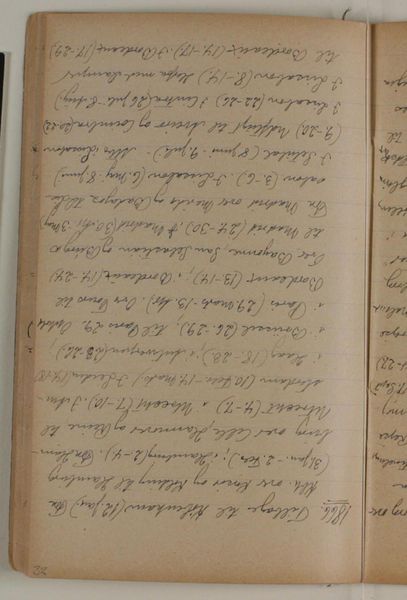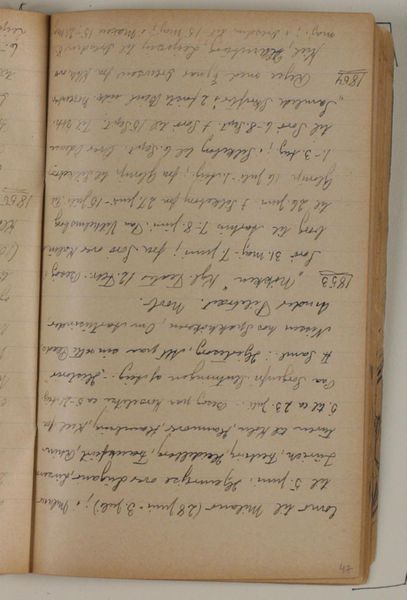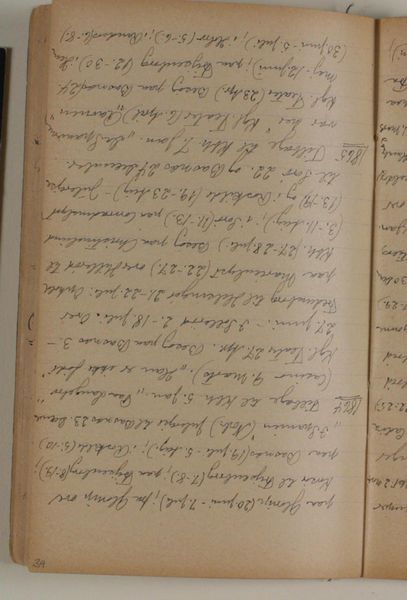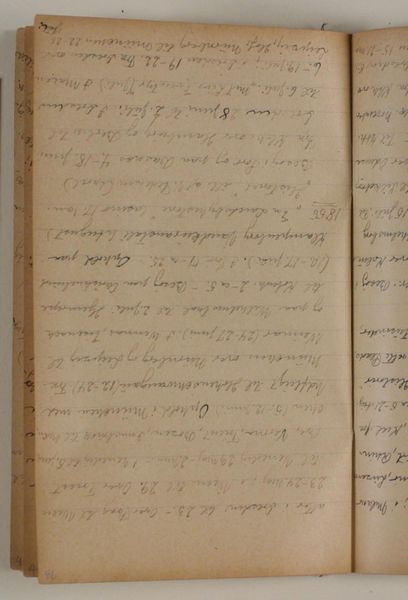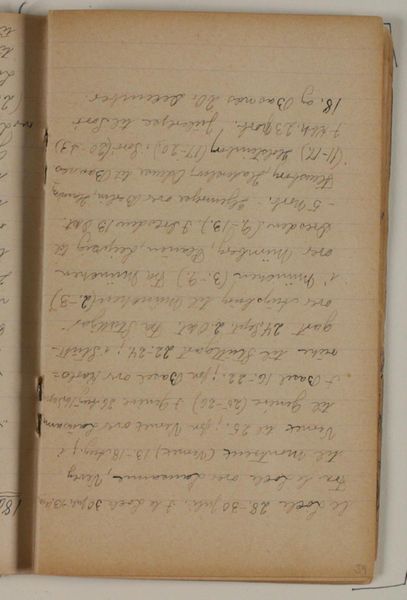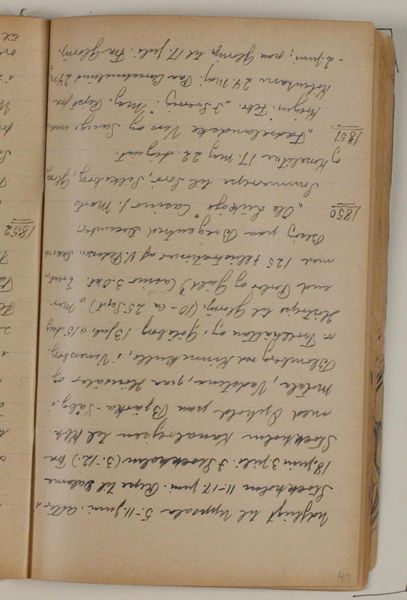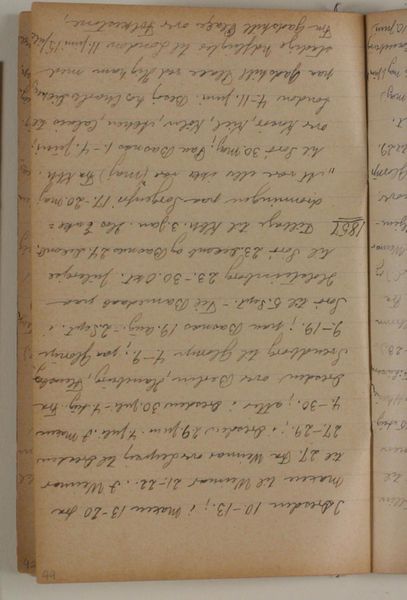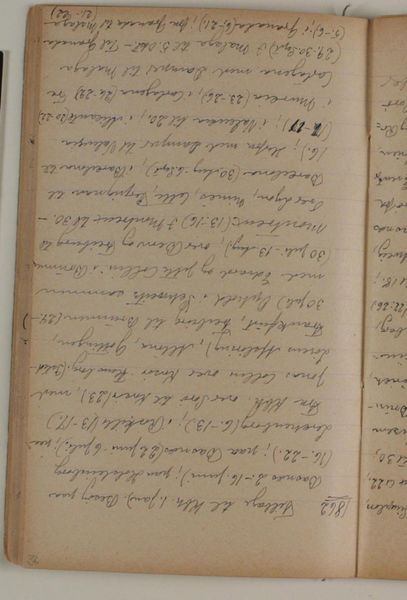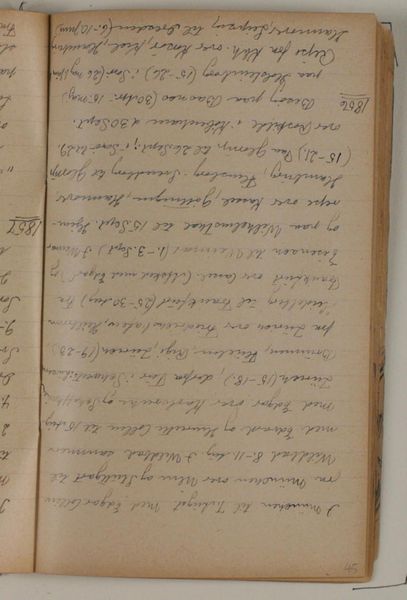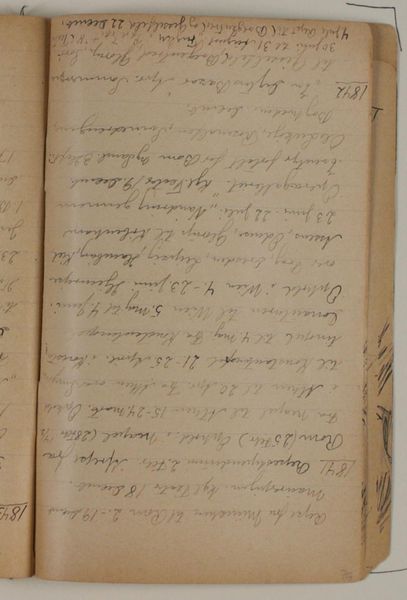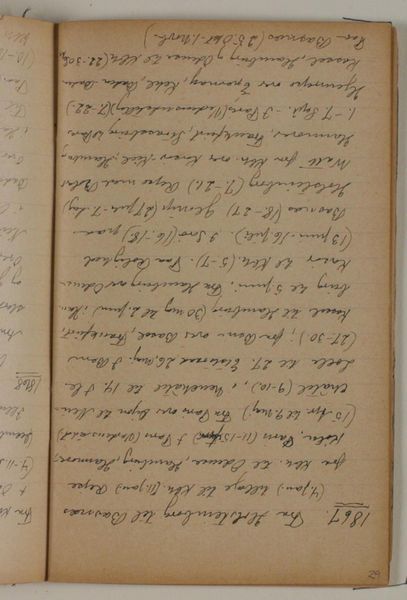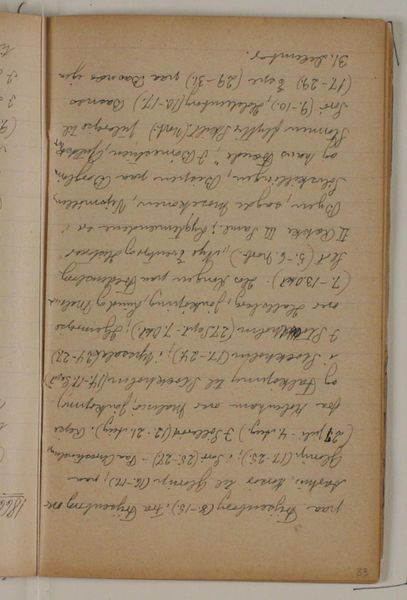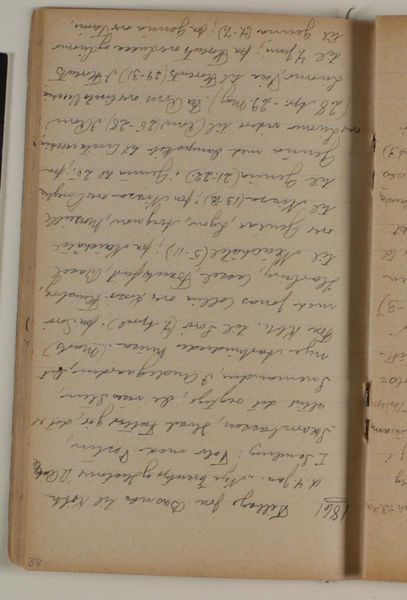
drawing, paper, ink
#
drawing
#
paper
#
text
#
ink
Curator: This page, "Tidstavle over H.C. Andersens liv 1866-44," by Niels Larsen Stevns, made with ink on paper sometime between 1930 and 1938, is certainly interesting. It’s housed at the SMK, Statens Museum for Kunst. At first glance, it seems like a simple page filled with handwritten text, but there's an almost frantic quality to the tight, dense script. What catches your eye about it? Editor: Well, knowing it's meant to be a timeline of Hans Christian Andersen's life, the medium itself – the ink, the paper, the artist’s hand – becomes very significant, a physical record of time and thought. How do you interpret the significance of these chosen materials in representing a literary figure's life? Curator: Exactly. Think about it – ink and paper were the tools of Andersen's trade as a writer. Stevns, using the same base materials, isn't just recording dates; he's engaging in a kind of material dialogue with Andersen’s creative process. The laborious act of writing, of physically marking the paper, becomes a parallel to Andersen's own literary production. Editor: So it's not just the information, but the method of conveying it that’s important. Does the medium change the message? Curator: Absolutely. And consider the social context. Stevns created this in the early 20th century. Why choose this intensely manual, almost antiquated form of record-keeping when photography and print were widely available? It suggests a deliberate emphasis on craft, on the labor involved in understanding a life. How might the intensive work involved in creating this affect its perceived value? Editor: It makes me think about how much information we consume digitally today, and how little tangible connection we have to the sources. There's a reverence for the subject achieved through the method of the inscription. Curator: Precisely! We're distanced from Andersen, yet made intimately aware of the layered historical, material realities by how this timeline was crafted and consumed over time. The intense, material act of creating this artwork really encourages that sort of active contemplation, doesn't it? Editor: I see now that this work acts almost as a time capsule, holding not just facts, but a reverence for material, craft, and even the writing process. Thanks, that's insightful.
Comments
No comments
Be the first to comment and join the conversation on the ultimate creative platform.
